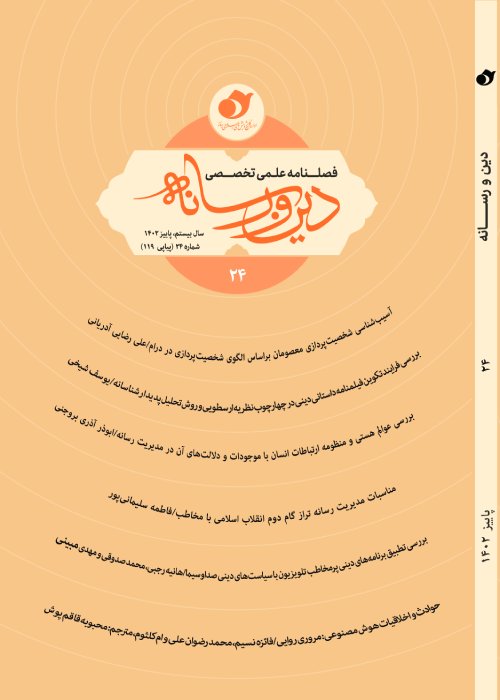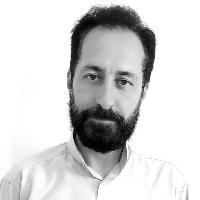Analysis of the Process of Creating a Religious Narrative Screenplay within the Framework of Aristotelian Theory and the Phenomenological Analysis Method
The study of form has become extensive and interdisciplinary in today’s world. The theorization of religious screenplays, not as a different genre of screenwriting, but as a different narrative form, is considered an important necessity in this field. The process of creating a religious screenplay becomes the central issue and fundamental question that shapes the present research. While the term “form” is often used in visual arts, the author of this research has endeavored to open new paths for future research by adopting a descriptive-analytical-prescriptive method. Rhetoric of Aristotle's art along with the four Aristotelian causes; material (material cause), content (final cause), author (efficient cause), structure (formal cause) and also technique (six elements of drama) as the cause which prepare and approach the components to do their duty (Moad cause), alongside the method of phenomenological analysis, forms the theoretical framework of the present research. The idea of the structural model of religious narrative screenplay is the same structure of order, disorder, and order that has been developed based on Islamic mysticism, hermeneutics circle, Jung’s theory of individuation, Ouspenskii’s quadrilateral bodies, Bergson’s time, existentialist philosophy, and the foundations of ethical mysticism and teacher-centered of Ja’fari school. Based on the important results obtained; First, among the three dimensions of religion (jurisprudence, theology, ethics), jurisprudence is effective in motivated and the result of the creation of an artistic form and theology is effective in motivated, motivation the result of the creation of an artistic form. However, the scope of the influence of ethics and mysticism is greater and leads to a revolution in the nature of artistic form. Second, by examining existing narrative patterns, a proposed structure for the fundamental model of religious screenplay has been outlined. Third, in the process of shaping a religious narrative screenplay, the focus is on the religious author (writer) and the final religious style or structure is an unintended result of his creative activity through six methods (in order of importance): religious theme, religious character, religious thought, religious dialogue, religious music, and religious scene. The religious author takes on religious forms or images with mimesis of nature and beyond, either alone or with the help of one of the divine saints, and transfers it to religious material.
- حق عضویت دریافتی صرف حمایت از نشریات عضو و نگهداری، تکمیل و توسعه مگیران میشود.
- پرداخت حق اشتراک و دانلود مقالات اجازه بازنشر آن در سایر رسانههای چاپی و دیجیتال را به کاربر نمیدهد.



